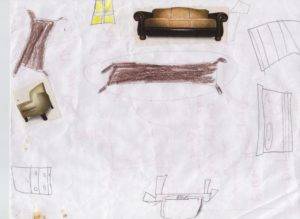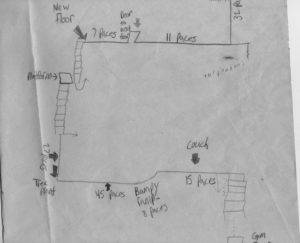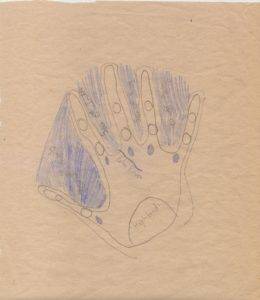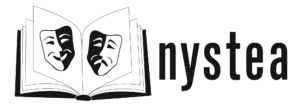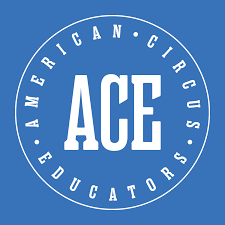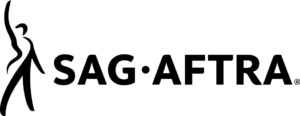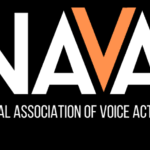Calling all teachers, artists, and community leaders—it’s map time!
Many of you are cartophiles like myself, and all of you probably use map comparison to look at socio-cultural perspectives of the map makers and how the cartographer’s viewpoint in turn affects our own.
Here’s a few on-your-feet activities to go with your history awareness and empowerment project.
Blindfolded Map Adventures
I’m going to give two examples of this exercise, which is also a fun way to build trust. Both have the first step: Get a Partner. Choose which of you will be blindfolded to do the Cartography, and which will be the Guide (or Ship).
Island Discovery
In this one, the facilitator uses mats or furniture or whatever to create a large (more than 12 feet in diameter is best, and if you can make something reeeeeeally big, that’s EVEN BETTER) “island” with a ragged, interesting “coastline.” The participants should not see it ahead of time, as the blindfolded one must make the first draft of the map. Remind the participants to notice how they feel about not knowing what’s coming, and about having to try to draw a map of the island. Have the Ships guide the blindfolded cartographers around the coastline (break them in to two groups if need be). After being guided, the Cartographers try to draw the island. I recommend using that language, and you’ll see why in a minute. Once they have made a first draft, have the Ships take them around again so they can check their work. Afterwards, the cartographers make updates, THEN the Ships make adjustments, and then the pair can go around together without blindfolds, making adjustments to their map as needed. If you have time, repeat the exercise with the other member of the partnership having a chance to be blindfolded.
After the maps are finished, unpack the experience. Have pairs share the maps—notice what they have in common and how they are different. What information was shared and how? What would happen if they heard sounds during the exercise, of animals or people or machines? Check in about what they were feeling during the experience. Use the conversation about the unknown to talk about new cultures, experiences, and people, and use the mapping as a metaphor for the process of learning to navigate. Use the conversation about the act of mapping to talk about discovery, exploration, history, and perception.
One intriguing alternative is to make the “island” medium sized, split the group in half, and have the blind-folded half discover the island’s contours without a guide—the other half can watch or be on safety patrol. Then have group one draw their maps while turned away from the island, then turn and look when they are done. Switch the island and the groups!
Building and Direction Discovery
In this variation, the Ship takes the Cartographer around the halls (rooms) of a building (you set the parameters). It can be a place everyone knows—like your own school—or a place new or not as well known. The idea is again to create a map whereby someone else can get there. The basic steps of activity and reflection are the same, but if you have done more than one kind of mapping now, you can ask, “How is this different?” and come up with at least 10 ways, which you can then dig into more deeply. Having participants develop their maps to include terrain or flora and fauna or elevation and a key is a super follow-up activity—with lots of new fun and insightful questions!
A fun variation is to have kids hide pencils or toys or food to create a treasure map for their partner, complete with fun context symbols. Treasure maps are fun because you have to rely on code and exclusive understanding—you want to give enough information for your partner to find the treasure, but not so much that anyone can find it! Fun to unpack these choices.
Imaginarium
Lots of options here.
- Map of my dream
- Map of the place (indoors or outdoors) in which the book we are reading occurs
- Map by how people give directions
- Map with features showing what is important, or who owns part of a home or range or street in a book or play or historical moment
- Map made from a hand tracing! (Hand Land!)
Process maps
- Maps to Get Lost By
- Map of how I thought the world was when I was little
- Map of what I want my community/town/school/world to be
- Before and after maps of events (historical, personal, literary)
- “How I think,” “How I learned this concept,” “Where I am in the land of understanding this,” “My Emotional World,” “How the world looks from my sister’s, father’s, friend’s, person-with-whom-I-am-having-conflict’s point of view”
- Map of my kitchen (bedroom, living room) from my point of view, then from my dog’s (collage techniques are super fun for this!)
As always, reflect, reflect, reflect. Maps are a metaphor on so many levels, and waaaaaay fun. Have to, Cartographers all!
